Could your building collapse in a major earthquake? Look up your address on these databases
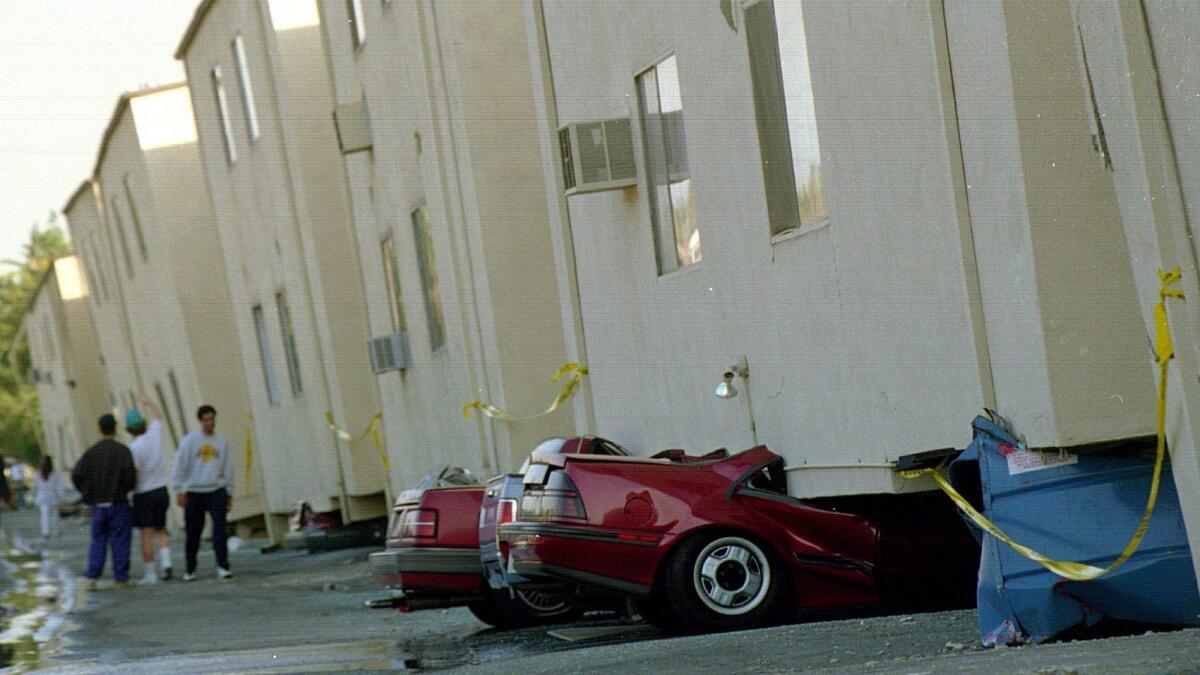
- Share via
The destruction from the 7.1 earthquake that rocked central Mexico on Tuesday is a reminder of the vulnerabilities Southern California faces from a strong temblor.
After decades of debate, Los Angeles and several other cities have in recent years required retrofitting of buildings that experts say are most vulnerable to collapse in a major quake. The city of Los Angeles has among the nation’s strongest quake rules, requiring fixes to both brittle concrete buildings and wood soft-story apartments.
More than 65 people died when these types of buildings collapsed during quakes in 1971 and 1994.
Other cities also require some retrofitting, including Santa Monica, which recently approved the nation’s strictest rules, as well as San Francisco and a number of smaller cities.
Soft-story apartments
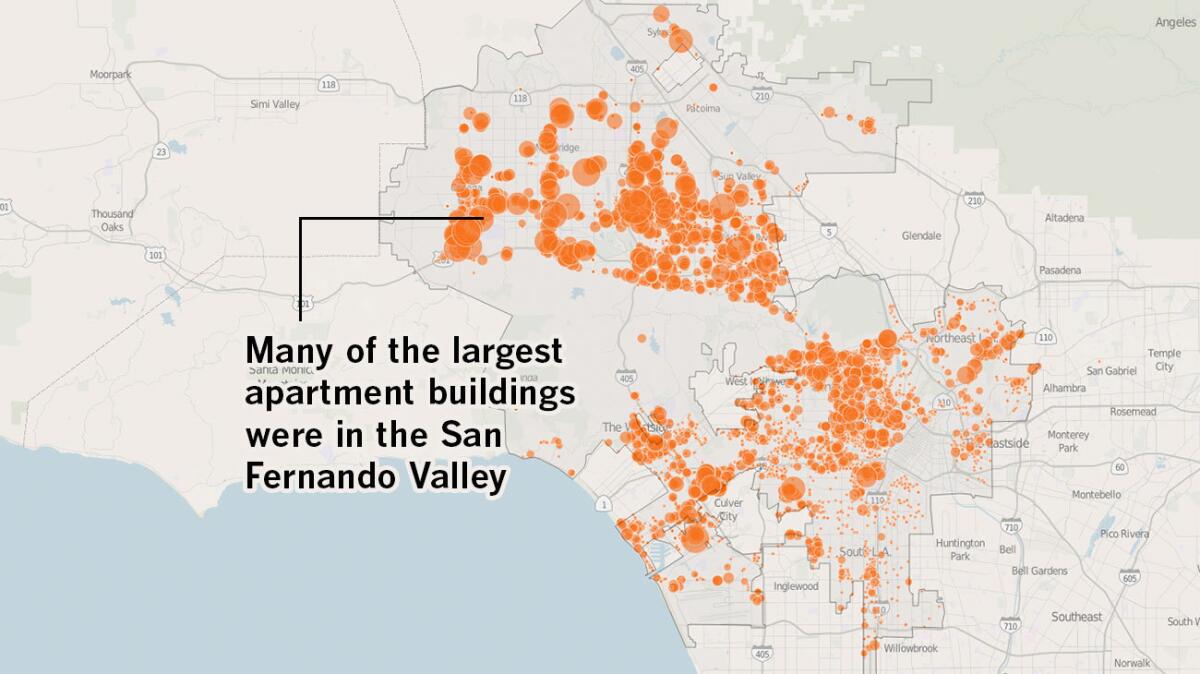
13,500 apartments face earthquake retrofitting
Los Angeles inspectors spent about two years developing a list of 13,500 so-called soft-story buildings that will probably need seismic strengthening. These apartments, which feature flimsy first floors that often serve as parking spaces, became popular after World War II as Los Angeles was spreading north into the San Fernando Valley and west toward the ocean.
But they've also proved to be vulnerable to violent shaking. Such buildings collapsed in the 1989 Loma Prieta earthquake and the 1994 Northridge earthquake, including one apartment building where 16 people died.
Owners of each building have been put on notice, and a number of them have already begun the retrofitting process. The retrofits can cost as much as $130,000, which has sparked concerns from owners and residents feeling the pressure of rising rents and a housing crunch.
Click here to search our database of affected building by address.
Before quake

Ground story can collapse in an earthquake

One retrofit solution

Concrete frame buildings
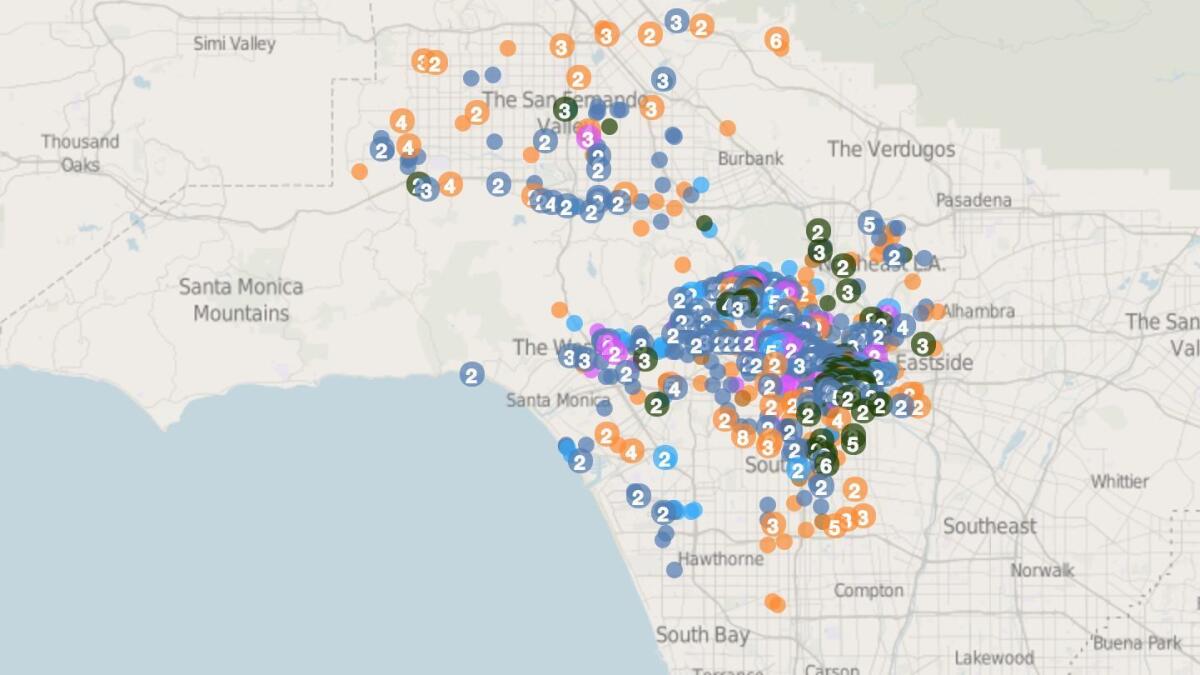
More than 1,000 concrete buildings could be vulnerable
Despite their sturdy appearance, some older concrete buildings are vulnerable to the sideways movement of a major earthquake because they don't have enough steel reinforcing bars to hold columns in place. University of California researchers estimate that about 75 of the nearly 1,500 buildings on the list could collapse in a large earthquake, exposing thousands to injury or death.
Each building would need to be examined more closely and undergo extensive testing to gauge its vulnerability; some may be safe, some may turn out not to be concrete. The scientists stressed that the list is not 100% accurate and that they have not reached any conclusions about the safety or hazard posed by any of the 1,451 buildings.
A Times analysis found more than 1,000 old concrete buildings in Los Angeles and hundreds more throughout the county may be at risk of collapsing in a major earthquake,
A separate group of scientists used public records, maps and street surveys to compile a list of nearly 1,500 concrete buildings constructed before 1976 in Los Angeles.
Click here to search our database of those buildings.

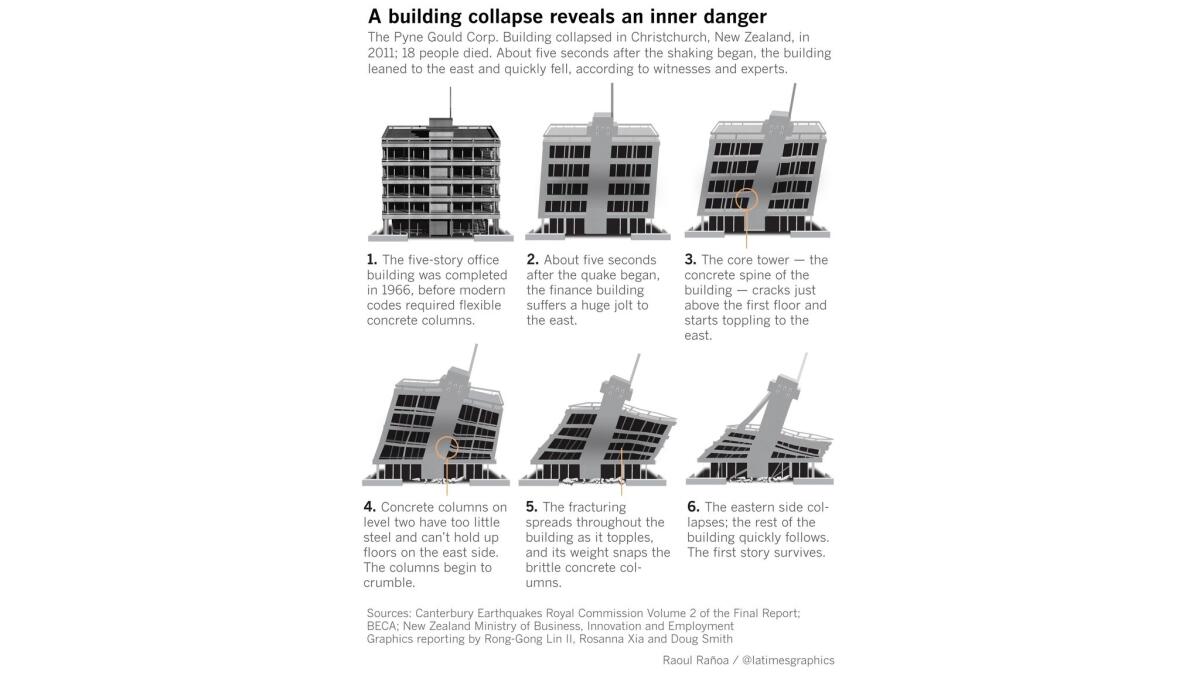
More resources
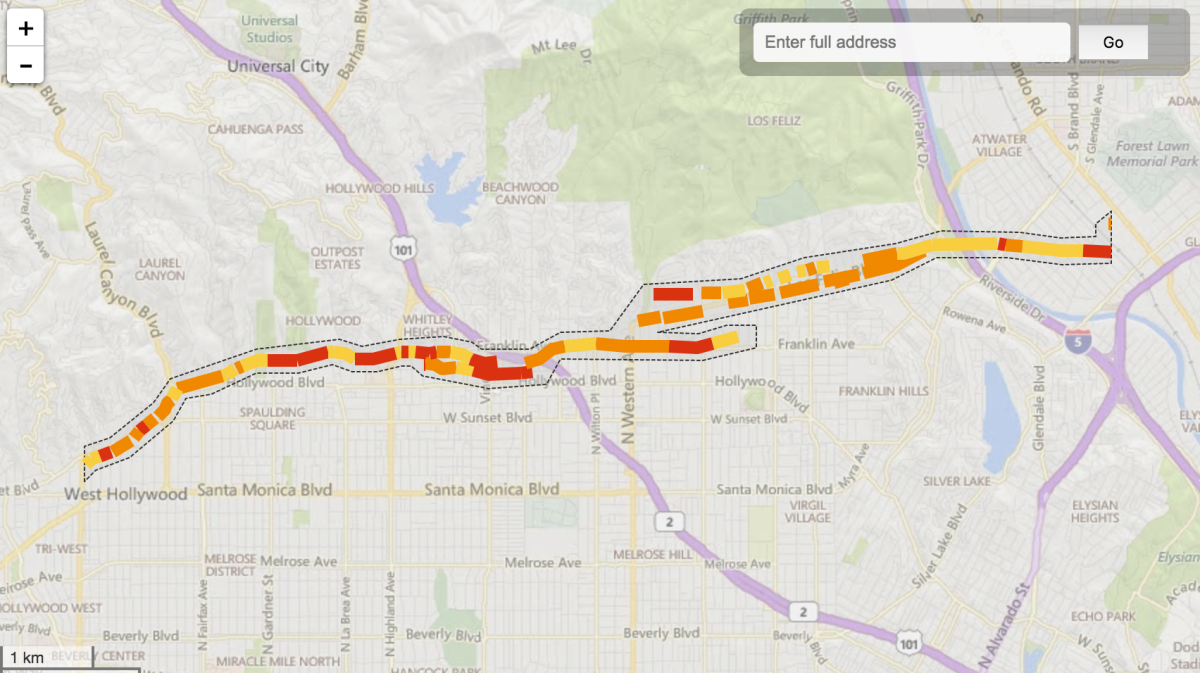
Danger zone near faults
Living above or adjacent to faults also increases chances of damage in a quake. Southern California is criss-crossed with faults, including such large ones as the Newport Inglewood, Puente Hills, Hollywood and Raymond.
Click here for a map searchable by address of the Hollywood fault.
Click here for a searchable database of Santa Monica buildings.
Danger from a huge quake is still high even if you don’t live in a soft-story or concrete building. Here are more quake preparedness and safety tips.
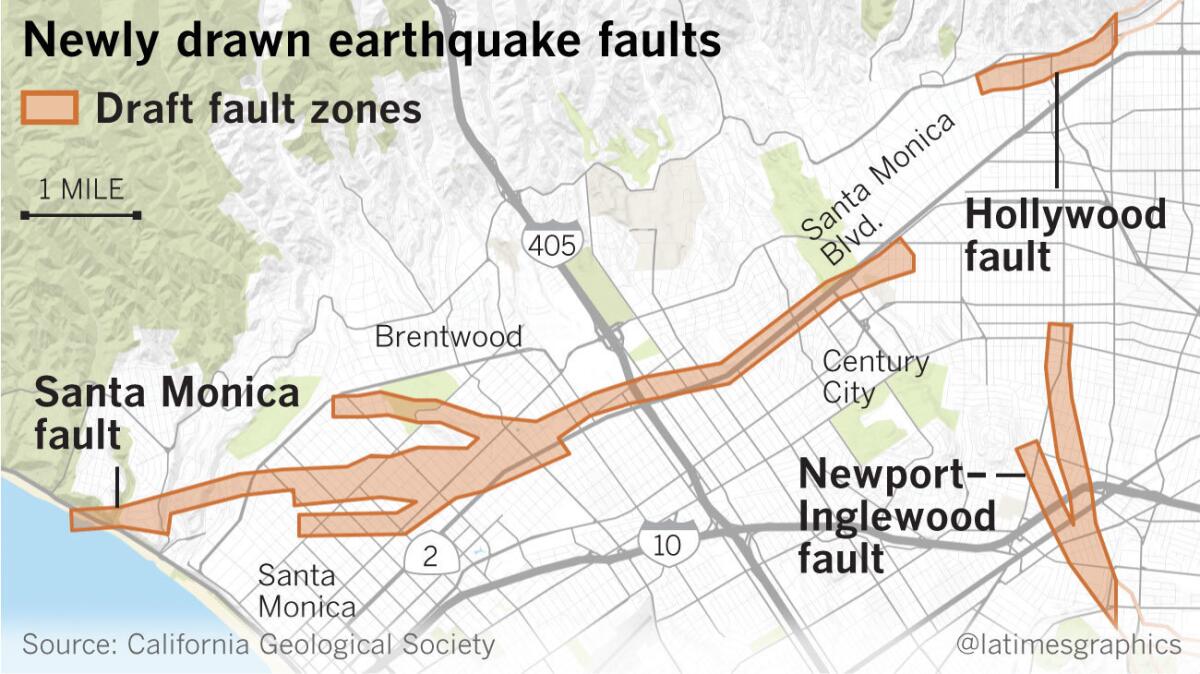
UPDATES:
Sept. 21, 5 p.m.: This article was updated with a database of soft-story buildings in San Francisco.
This article was originally published on Sept. 20 at 9 a.m.
Sign up for Essential California
The most important California stories and recommendations in your inbox every morning.
You may occasionally receive promotional content from the Los Angeles Times.









